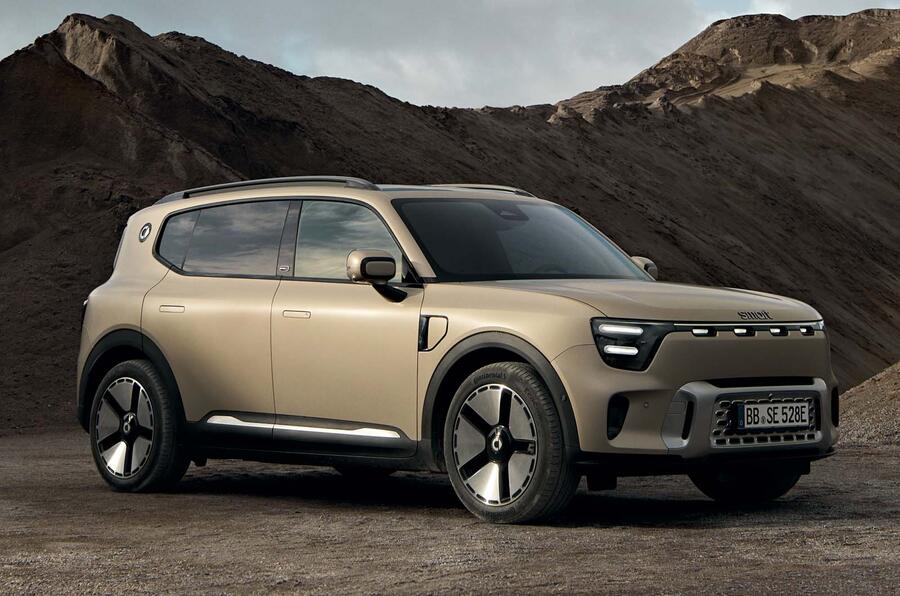Smart has revealed the #5 as its biggest model yet – an EV that will attempt to win over buyers of large SUVs with its off-road character.
Revealed in Australia (a market in which Smart is keen to grow), it comes with a 100kWh battery that is good for 348 miles of range and, thanks to an 800V electrical architecture, can charge from 10-80% in just 15 minutes.
A smaller battery version will join the range after the car launches in Europe next summer.
It sits on the same Geely SEA2 platform as the smaller #1 and #3 crossovers, the #5 measures 4705mm long, 1920mm wide and 1705mm tall – a similar size to the new Peugeot 5008, although it’s not a seven-seater.
While retaining a lot of Smart’s modern design cues, such as concealed door handles and rounded edges, it differs from the rest of the line-up by swapping angular headlights and a singular light bar for a boxier, more rugged look.

One of the big changes comes inside, where dual 13in OLED infotainment touchscreens dominate the dashboard. It uses an evolved version of Smart's UX system; like siblings, it too gets an animal avatar, this time a lion.
Meanwhile, the driver gets a 10.3in digital instrument cluster, up on sibling cars’ 9.2in screens.
It also introduces a new 25.6in augmented reality head-up display. Another unique feature of the #5, aligning with its outdoor adventure focus, is that all of its seats are designed to also function as makeshift beds.
Power figures haven’t yet been released, but details published by the Chinese government in June suggest that it will top out with a 637bhp dual-motor model, again using the Brabus nameplate.














Join the debate
Add your comment
His point is Pete, that we are not in the EU, so import tariffs t the EU wouldn't affect the cost in the UK directly Probably indirectly they do however - if the EU market becomes less attractive, with smaller volumes imported to Europe including the UK you will probably need higher prices to cover the loss of economies of scale across your whole European operation.
What's the point in introducing a brand selling innovative small cars like the original Smart range, then using that same brand to market powerful Chinese EV heavyweights? Perhaps it would make sense to sell these new models exclusively as Brabuses (or should that be Brabi)?
To my mind it's a missed opportunity, since they could have used Smart for pioneering affordable and compact EVs to compete with the Dacia Spring....
Smart was never about affordability. Maybe they were cheaper than some but they were also a lot smaller.